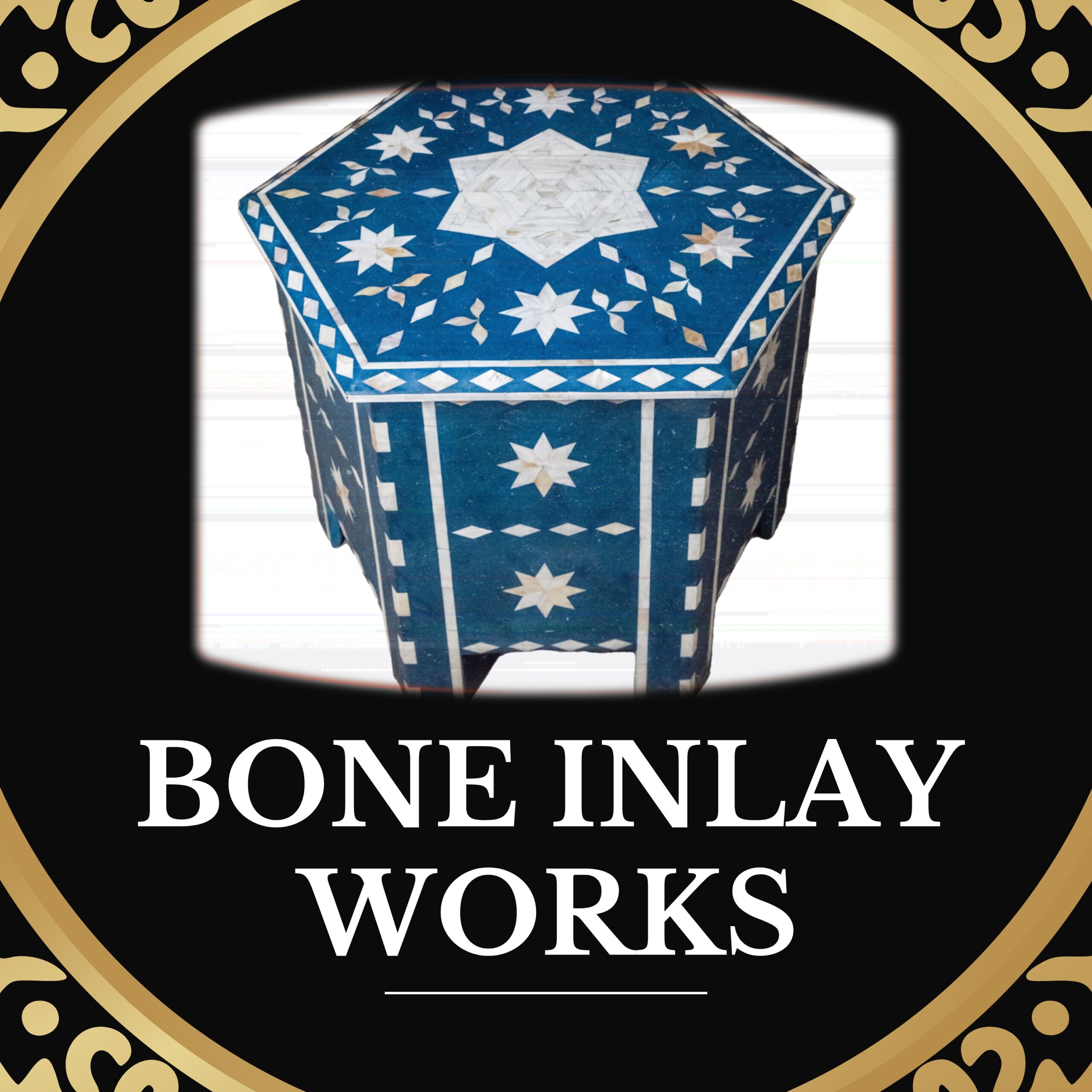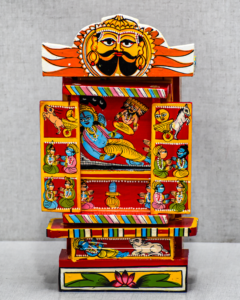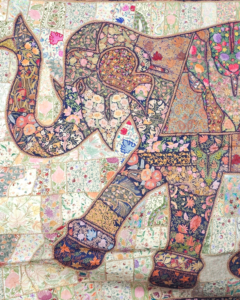History of Bone Inlay
The history of bone inlay can be traced back to ancient civilizations such as Egypt, Greece, and Rome, where it was used to decorate furniture, household items, and jewelry. The art of inlaying bone into furniture and other decorative objects was also practiced by the Chinese and Japanese, with examples of inlaid bone furniture dating back to the Ming Dynasty (1368–1644). The art form has been practiced for centuries by skilled artisans who have passed down their knowledge and techniques through generations. The skill of bone inlay was passed down through generations and was later adopted by other cultures such as the Indians and the Chinese.
Bone Inlay in India
In India, the traditional art form originated in the state of Rajasthan. The origins of bone inlay can be traced back to the courts of the Rajput kings, who commissioned the creation of intricate and ornate furniture and decorative items. These items were made using a variety of materials, including wood, metal, and bone. The use of bone inlay in furniture and decorative items was particularly popular as it provided a unique and intricate design aesthetic. The popularity of bone inlay furniture and decorative objects continued to grow in the 20th century, and it is now considered a luxurious and elegant decorating style.
The “City of Lakes” Udaipur is known for its rich cultural heritage city in the western Indian state of Rajasthan. A popular tourist destination where the art of Bone inlay is known for its intricate and delicate designs, as well as the high quality. The artisans of Udaipur use dead buffalo and camel bones, which are first cleaned, boiled, and then dyed in vibrant colors before being carved and shaped into intricate designs. The bones are usually dyed to match the color of the surrounding wood, creating a seamless and intricate design. The bone pieces are then inlaid into wooden furniture and decor items such as tables, chairs, cabinets, mirror frames, and more.
How it is processed
- Cleaning and boiling: The bones are first cleaned to remove any impurities, then boiled to sterilize them and to make them pliable for cutting and shaping.
- Dyeing: The bones are then dyed in vibrant colors using natural dyes. The dyes used vary depending on the desired color, but natural dyes such as indigo, madder, and pomegranate are commonly used.
- Cutting and shaping: The bones are then cut and shaped into the desired designs using a variety of tools, such as knives, saws, and files. The designs are usually very intricate, and they can be created by hand or with the help of a template.
- Inlaying: The cut and shaped bone pieces are then inlaid into a wooden base, such as furniture or decorative objects, using a strong adhesive. The inlay is then sanded and polished to create a smooth and seamless finish.
- Finishing: The final step is to apply a finish to the piece, like wax, oil, or varnish, to protect it from damage and to enhance its natural beauty.
The process involved is time-taking and requires a high-level skillset. The result is a unique and beautiful piece of art that can be highly valued.
Characteristics
The patterns and designs used in bone inlay can vary widely, from simple geometric shapes to more complex and detailed designs. Some common patterns and designs used in bone inlay include:
- Floral designs: flowers and leaves in various shapes and sizes.
- Geometric patterns: squares, triangles, diamonds, circles, and other simple geometric shapes.
- Animal motifs: images of animals like elephants, camels, horses, and peacocks
- Intricate patterns: a variety of shapes and designs that are interwoven to create a more intricate overall pattern.
- Customizable patterns: based on a customer’s specific requests.
Bone inlay products can be stained to enhance the color and design of the inlaid bones. Staining involves applying a colored dye or paint to the bones to change their color and create a more cohesive design.
- Natural dyes: made from natural materials – fruits, vegetables, and spices, and provide a more authentic and natural look to the bone inlay.
- Chemical dyes: synthetic dyes that can be used to create a wider range of colors and shades.
- Pigment paint: the type of paint that is used to color the bones, it is thicker and more opaque than regular paint, which allows for a more consistent and vibrant color.
Bone inlay can be considered an expensive decorative technique, due to the level of skill and craftsmanship required to create the intricate designs, as well as the cost of the materials used. All the steps require a high level of skill and expertise, and the craftsmanship is passed down through generations, making the process labor-intensive. However, it is also worth noting that Bone Inlay products vary in price, some are very expensive, and some are more affordable. It depends on the quality and design of the product.
Ethical use of Bone Inlay
The use of animal bones in bone inlay is a controversial topic, with some people arguing that it is ethical and others arguing that it is not. Some people argue that using bones in inlay is a traditional and cultural practice that has been passed down through generations and that it is a way to make use of materials that would otherwise go to waste. On the other hand, others argue that using bones in inlay is unethical because it involves the use of animal remains and it can be viewed as disrespectful to the animals who were killed for their bones.
It’s worth noting that the use of animal bones in any product should be done ethically and sustainably. This means that the source of the bones should be verified and compliant with the laws and regulations and that the animals were not killed for their bones specifically. In addition, the use of animal bones in bone inlay should be done in a respectful way, not in a way that could be viewed as exploitative or disrespectful.
How to take care of Bone Inlay Furniture
The long-lasting glamour and shine of inlaid bone products can be conserved by proper caring and regular cleaning. While cleaning, wipe-off dust from every corner of the decorative pieces with a soft cloth, like cotton. Handle the products with care and place or shift them with easy hands to avoid any sort of breakage. Moreover, do not paint bone inlay furniture with average-quality paint, this will ruin the finesse of these products. Invest in high-quality paint, if you wish to recolor them on your own. By adopting the right cleaning ways, you can enhance the exquisite charm of bone inlay.
Over the centuries, the art of bone inlay has evolved and spread to other parts of India, as well as other countries in the Middle East, Europe, and North America. Today, bone inlay continues to be a popular art form, and is highly sought after by collectors and interior designers around the world.




